LoRa And LoRaWAN IoT Connectivity Market Size
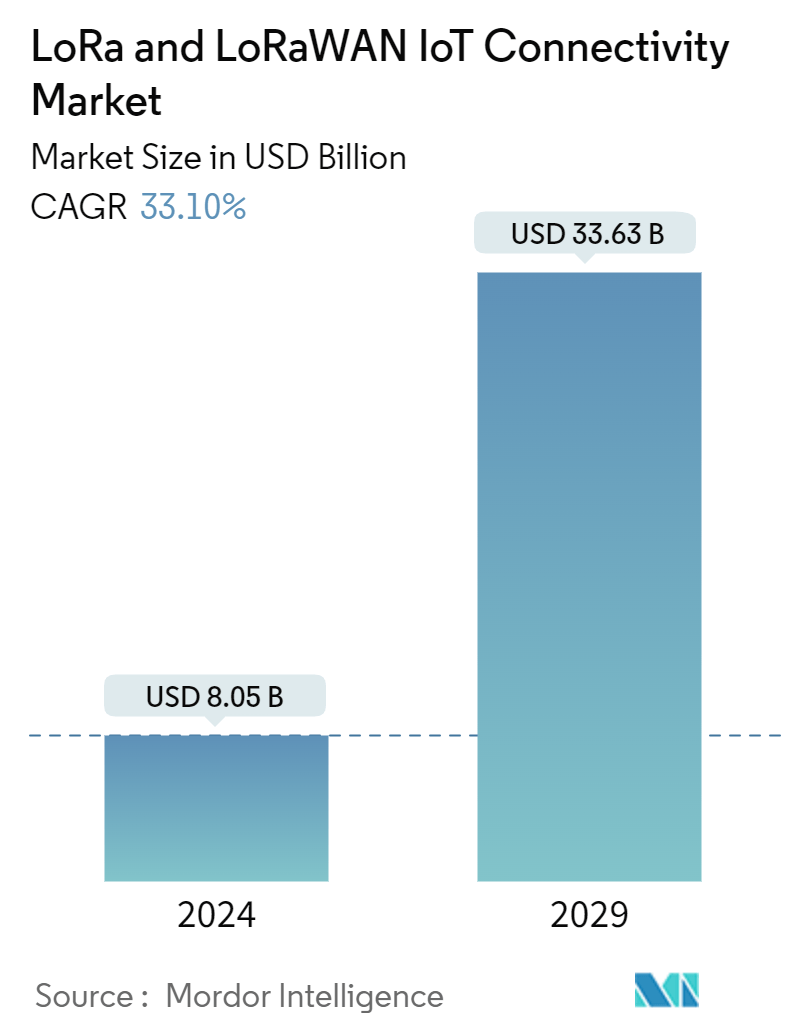
| Study Period | 2019 - 2029 |
| Market Size (2024) | USD 8.05 Billion |
| Market Size (2029) | USD 33.63 Billion |
| CAGR (2024 - 2029) | 33.10 % |
| Fastest Growing Market | Asia Pacific |
| Largest Market | North America |
Major Players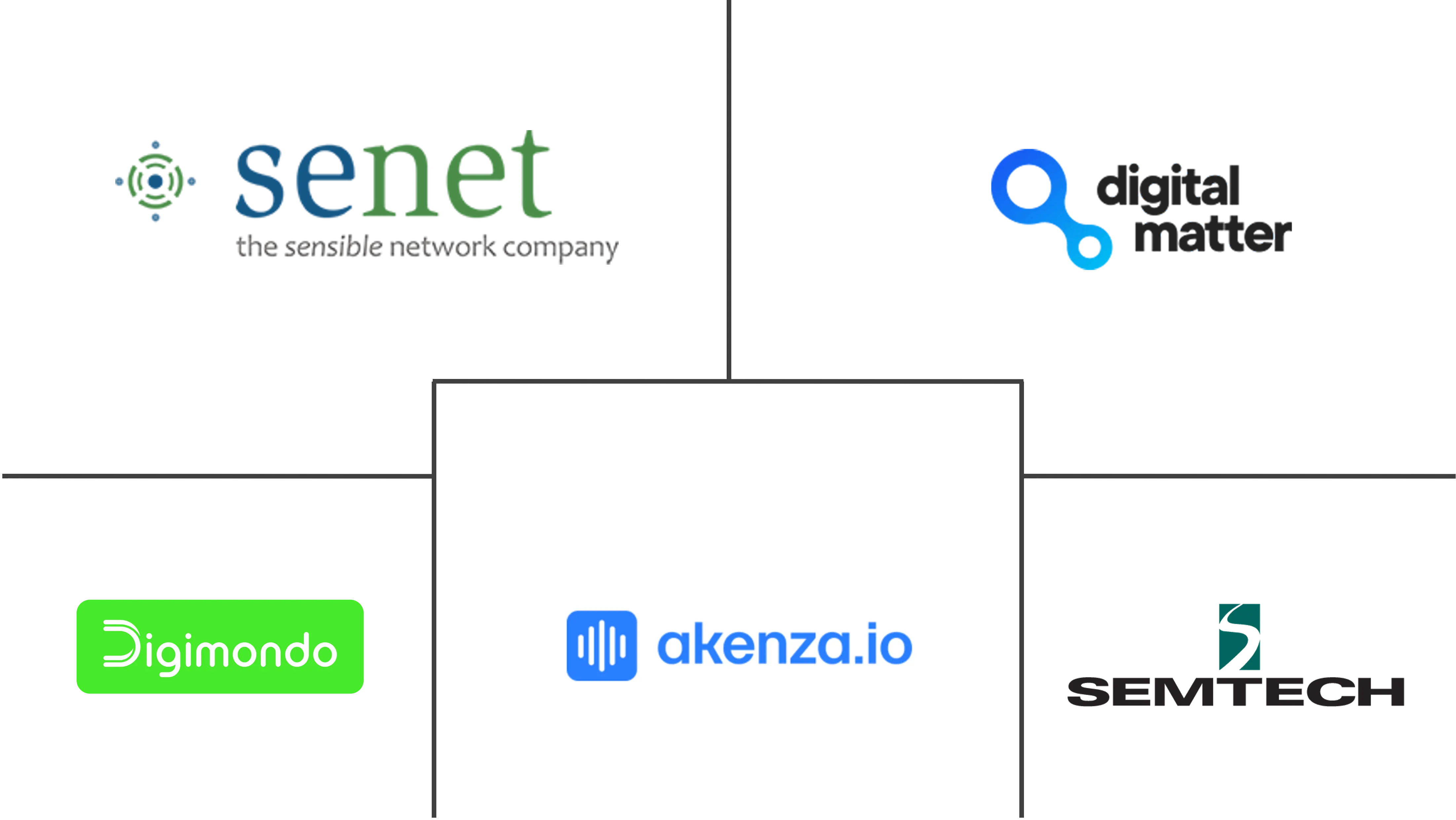
*Disclaimer: Major Players sorted in no particular order |
LoRa And LoRaWAN IoT Connectivity Market Analysis
The LoRa And LoRaWAN IoT Connectivity Market size is estimated at USD 8.05 billion in 2024, and is expected to reach USD 33.63 billion by 2029, growing at a CAGR of 33.10% during the forecast period (2024-2029).
LoRa and LoRaWAN technologies are gaining traction in the IoT market, primarily due to their affordability and scalability. LoRa's simple hardware requirements and efficient communication protocols make it a standout choice for developing affordable IoT devices and sensors. This affordability expands the adoption of IoT solutions, enhancing their accessibility across various industries. Such accessibility is particularly beneficial for sectors constrained by budget or resources.
• LoRaWAN's architecture is lauded for its seamless scalability, enabling the deployment of IoT networks ranging from thousands to millions of devices. This scalability is crucial for IoT applications requiring extensive coverage, notably in smart cities, industrial automation, and supply chain management sectors. The combination of cost-effective device development and the ability to scale networks positions LoRa and LoRaWAN as key enablers of IoT adoption, driving their penetration across diverse sectors.
• NEOM City, under construction in Saudi Arabia, is poised to become a leading smart city. By 2030, it's projected to accommodate 200 million IoT devices. In July 2023, TONOMUS, NEOM's cognitive technology arm, unveiled its inaugural digital communications hub. This center is designed to support a software-centric network and a secure private cloud, catering not only to 60 locations but also to around 1,800 structures. It's a crucial infrastructure, especially given NEOM's ambitious plans, which include hosting an estimated 300,000 construction personnel by 2025 and those above 200 million IoT devices by 2030.
• LoRa and LoRaWAN technologies are pivotal in the realm of Industrial IoT. They empower large industrial segments to swiftly adapt, reduce operational costs, enhance worker safety, and bolster environmental and social governance. This adaptability is crucial for these industries to survive and grow in an increasingly digital landscape. In the LoRaWAN setup, gateways are strategically placed on-site. A single gateway can cover a modest terminal, and when combined with tens of thousands of IoT sensors, they form a robust network. This network ownership grants the IT department unparalleled control over its parameters. Moreover, a well-executed wireless deployment using LoRa and LoRaWAN ensures seamless infrastructure expansion or redeployment, minimizing operational disruptions.
• LoRa technology, though effective for low data rate applications, faces bandwidth constraints compared to its wireless counterparts. This limitation proves challenging for applications demanding high data throughput. In areas densely populated with LoRaWAN or other wireless networks, interference and congestion can arise, potentially hampering the reliability and performance of device-to-gateway communications.
• LoRaWAN routing encounters numerous challenges. A primary issue arises from its restricted one-hop communication range between end nodes and gateways. This limitation is especially troublesome in regions with spotty internet coverage or radio-hostile environments. Additionally, extended links face the risk of obstacles and interference, potentially hampering packet reception. Furthermore, ensuring data security and privacy is a pivotal hurdle in the widespread acceptance of LoRaWAN technologies.
LoRa And LoRaWAN IoT Connectivity Market Trends
Digital Transformation and Industrial Automation to Drive the Market
- LoRaWAN technologies, compared to counterparts like 5G or NB IoT, boast significantly lower energy consumption, up to five times less. This efficiency makes LoRaWAN especially lucrative for applications with modest data needs or no real-time demands. With data volume and transfer frequency as variables, LoRaWAN devices can have a battery life ranging from five to 15 years. Such longevity proves invaluable for industries managing assets in remote areas or dealing with a high volume of connected devices, leading to substantial cost and time savings on maintenance.
- LoRaWAN applications empower public and private entities to gather crucial data in smart cities, enhancing urban sustainability and livability. These applications facilitate various functions, from monitoring waste container levels and controlling street lighting to tracking energy consumption, environmental metrics like CO2 levels, and parking space occupancy. India's ambitious initiative to develop over 100 smart cities, with projects valued at USD 21 billion tendered by September 2023, is poised to significantly boost the adoption of LoRaWAN-based IoT solutions nationwide.
- LoRaWAN enables precise asset tracking in expansive environments like airports and seaports. It can accurately provide the location of containers, forklifts, trucks, and other equipment with an accuracy of just a few meters. For applications demanding even greater precision in open areas, LoRaWAN can be paired with GPS. The trend towards 'smart airports,' integrating IoT technologies like LoRaWAN, is gaining momentum, focusing on enhanced infrastructure, automation, real-time analytics, and predictive tools for better decision-making.
- Industrial 4.0 applications are pivotal in automating production and driving digitalization in the European industry. Sensors monitoring vital parameters like temperature, humidity, and vibration ensure adherence to protocols and facilitate predictive maintenance.
- For instance, data from GTAI - the German Trade and Invest Agency, reveals that Germany alone poured over EUR 10 billion into Industry 4.0 initiatives over five years. Furthermore, in July 2023, Siemens announced it would spend EUR 1 billion in Germany to create a blueprint for an industrial metaverse in the Nuremberg metropolitan region.
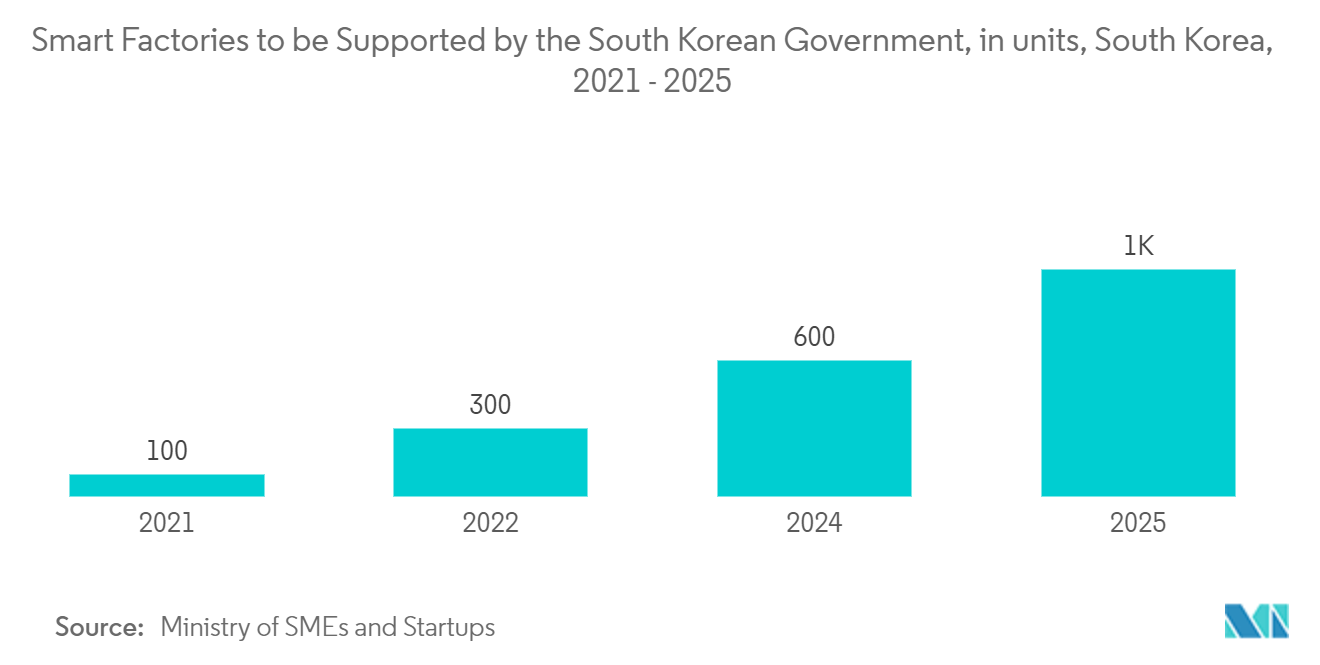
Manufacturing to Drive the Market
- Industrial IoT transforms operations by digitizing legacy processes and equipment, boosting profits, cutting costs, and enhancing efficiencies. Devices and sensors enabled with LoRa transmit real-time data, offering crucial insights into predictive maintenance, machine health, efficiency, and minimizing downtime.
- Within the automotive industry, LoRaWAN solutions primarily prevent the loss of load carriers and transported goods. Components like engines and transmissions, sourced by car manufacturers from Tier 1 suppliers, hold significant value, typically priced between EUR 500 and 2000. Specialized cargo equipment represents a comparably high-value asset. It's worth noting that logistics processes can experience loss rates ranging from 5 to 15%. By leveraging LoRaWAN applications, businesses can achieve heightened transparency throughout their supply chains.
- For instance, in January 2024, Quectel Wireless Solutions, a global leader in IoT solutions, unveiled its latest innovation, the KG200Z module. This LoRa technology module is tailor-made for IoT projects, prioritizing reliability, ultra-low power consumption, and cost efficiency. The KG200Z promises robust connectivity, with an impressive reach of 2-5 kilometers in urban environments and 10-15 kilometers in suburban settings. Its compact dimensions, at 12.0 mm x 12.0 mm x 1.8 mm in an LGA package, make it a versatile choice for manufacturers and developers looking to integrate IoT solutions into their devices seamlessly.
- In March 2024, Quectel, a prominent player in LoRaWAN IoT solutions, unveiled a strategic partnership in collaboration with Things Industries. This alliance ensures that Quectel's KG200Z LoRaWAN module is pre-equipped with "Works with The Things Stack" and "Secured by The Things Stack" certifications, bolstering its security features. By teaming up with The Things Industries, Quectel enables its customers to integrate the KG200Z module into their device designs seamlessly and grants them access to a suite of additional services. This partnership underscores a commitment to end-to-end encryption and key management while harnessing Quectel's extensive experience in module technology.
- Industry 4.0 reshapes how businesses approach product design, manufacturing, and distribution. Both companies and governments are making significant investments to align with this transformative shift. For instance, the Maryland Government allocated a substantial sum of USD 1 million to aid over two dozen manufacturers in adopting Industry 4.0 technologies. Through the Maryland Manufacturing 4.0 initiative, 26 small and mid-sized companies in Maryland have secured grant funding, emphasizing the push for industry innovation. This surge in Industry 4.0 investments is poised to bolster the studied market, particularly propelling the LoRA and LoRAWAN sectors.
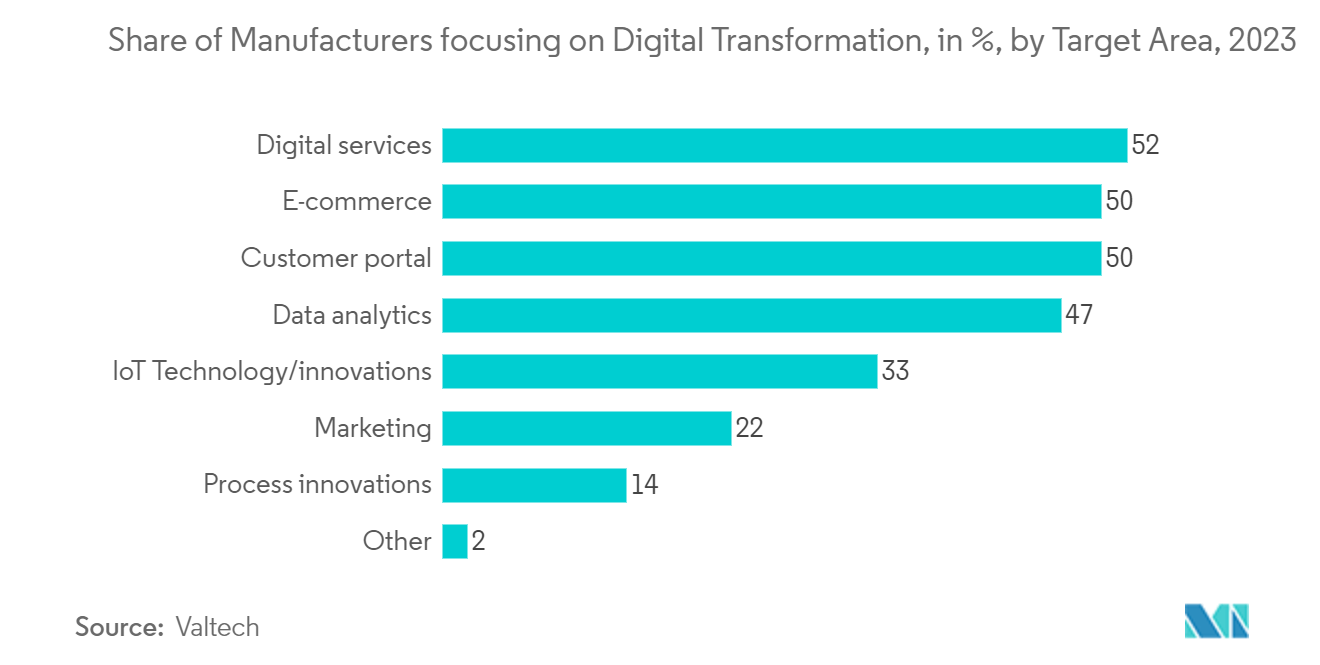
LoRa And LoRaWAN IoT Connectivity Industry Overview
The LoRA and LoRAWAN Markets are fragmented in nature. Senet, Semtech Corporation, Digimondo GmbH, Akenza AG, and other major players in the market studied. Players in the market are adopting strategies such as partnerships, agreements, innovations, and acquisitions to enhance their service offerings and gain sustainable competitive advantage.
- In April 2024, AWS introduced support for LoRaWAN on its public network in Spain. This means Amazon Web Services (AWS) clients in Spain can now seamlessly link their low-power, long-range LoRaWAN devices to AWS's cloud services. Through AWS IoT Core for LoRaWAN, a fully managed Network Server, customers can effortlessly integrate their wireless devices, utilizing the LoRaWAN protocol, with the AWS cloud. This service streamlines the process and eliminates customers' need to maintain their LoRaWAN servers on-premises, offering the flexibility to establish private LoRaWAN networks.
- In January 2024, Avnet Enhances IoTConnect, Powered by AWS, with LoRaWAN and Amazon Sidewalk Support. Original Equipment Manufacturers (OEMs) can now swiftly craft smart Internet of Things (IoT) devices on Amazon Web Services (AWS) with Avnet’s latest IoTConnect update. This comprehensive release not only integrates native backing for LoRaWAN gateways and devices but also extends support to Amazon Sidewalk-enabled devices. Amazon Sidewalk, a long-range, low-bandwidth network, is tailored to interlink billions of IoT devices securely. Avnet’s IoTConnect, known for its simplicity, security, and scalability in connected solutions, now offers a unified "single pane of glass" experience for effortlessly onboarding and linking these novel devices.
LoRa And LoRaWAN IoT Connectivity Market Leaders
-
Senet
-
Semtech Corporation
-
Digimondo GmbH
-
Digital Matter
-
Akenza AG
*Disclaimer: Major Players sorted in no particular order
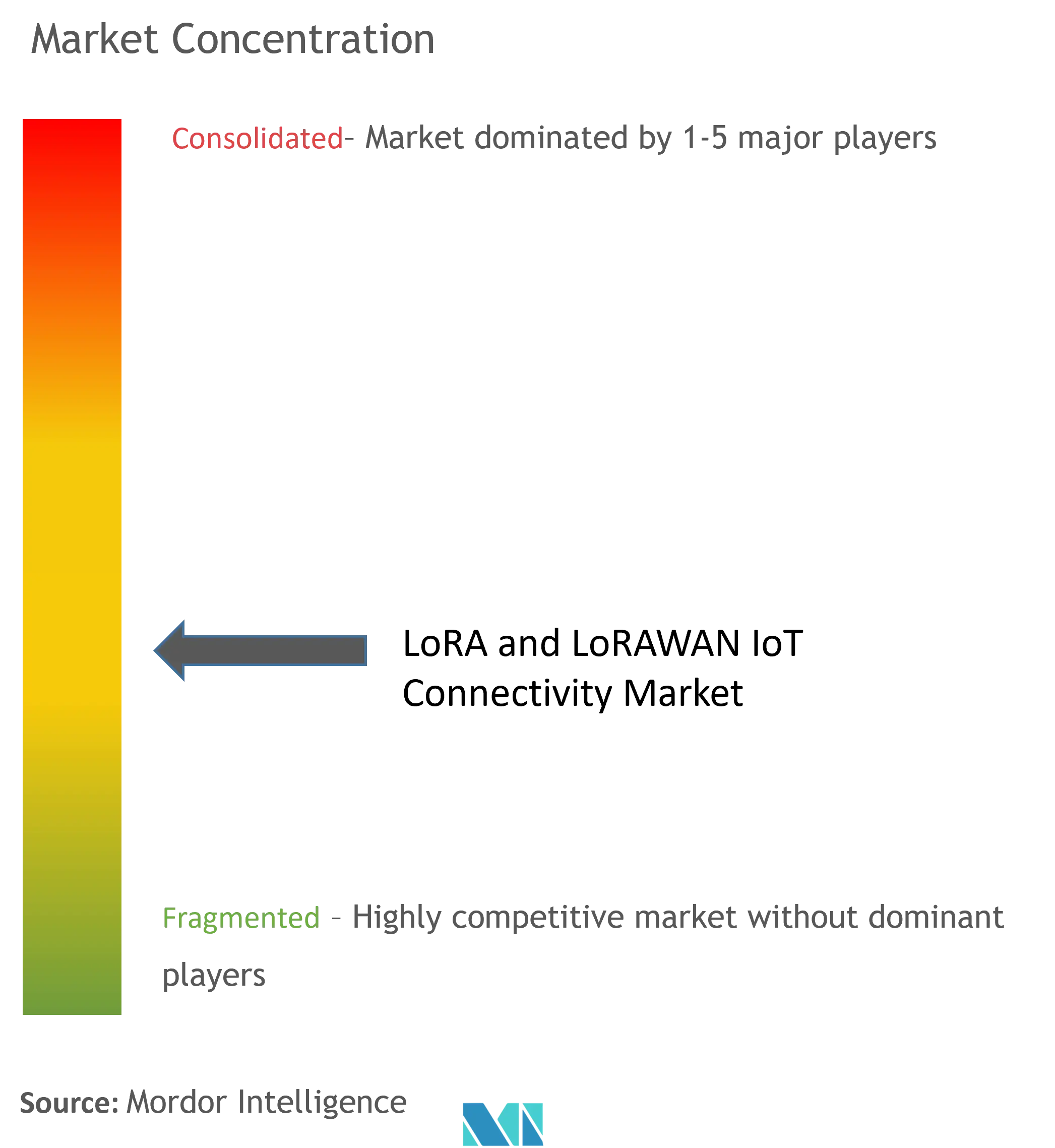
LoRa And LoRaWAN IoT Connectivity Market News
- In April 2024, RAKwireless unveiled two LoRaWAN products: the RAK5166/67 WisLink M.2 3042/2280 concentrator module, leveraging the Semtech SX1303 RF transceiver, and the RAK7285 WisGate Edge Ultra Full-Duplex gateway. These offerings are tailored for dense network setups, making them ideal for applications in smart city infrastructure, metering, and any scenario demanding robust, large-scale bidirectional communication.
- In February 2024, Advantech, a leading industrial IoT solutions provider, unveiled its cutting-edge EVA-2000 series. This new line of smart wireless sensors integrates LoRaWAN technology, promising extended data transmission ranges and impressive power efficiency. The EVA-2000 series, featuring a range of sensor models covering areas from temperature and humidity to water leak detection, is tailored for the rigorous needs of industrial automation, equipment monitoring, and environmental oversight.
LoRa And LoRaWAN IoT Connectivity Market Report - Table of Contents
1. INTRODUCTION
- 1.1 Study Assumptions and Market Definition
- 1.2 Scope of the Study
2. RESEARCH METHODOLOGY
3. EXECUTIVE SUMMARY
4. MARKET INSIGHTS
- 4.1 Market Overview
- 4.2 Analysis of Macro-Economic Scenarios (Recession, Russia-Ukraine Crisis, etc.)
5. MARKET DYNAMICS
-
5.1 Market Drivers
- 5.1.1 Proliferation of Connected Devices Gathering Data and Controlling Things
- 5.1.2 Digital Transformation and Industrial Automation
-
5.2 Market Restraints
- 5.2.1 Need for Technology-specific Skillset and Awareness
- 5.2.2 Increase Cybersecurity Risks
- 5.3 Insights on LoRa and LoRaWAN IoT Connectivity
- 5.4 Analysis of Pricing Models and Pricings
-
5.5 Key Use Cases of LoRa and LoRaWAN IoT Connectivity
- 5.5.1 Smart Cities
- 5.5.2 Smart Buildings
- 5.5.3 Connected Medical Devices
- 5.5.4 Smart Fleet Management and Tracking
- 5.5.5 Smart Agriculture
- 5.5.6 Environmental Monitoring and Alerts
- 5.6 LoRa and LoRaWAN-related Government Regulations Across the Globe
6. MARKET SEGMENTATION
-
6.1 By Offering
- 6.1.1 Hardware
- 6.1.2 IoT Software/Platform
- 6.1.3 Services
-
6.2 By Size of Enterprise
- 6.2.1 Small and Medium Enterprises
- 6.2.2 Large Enterprises
-
6.3 By Industry Vertical
- 6.3.1 Healthcare
- 6.3.2 Transportation and Logistics
- 6.3.3 Government and Public Sector
- 6.3.4 Retail and E-commerce
- 6.3.5 Manufacturing
- 6.3.6 Energy and Utilities
- 6.3.7 Other Industry Verticals
-
6.4 By Geography
- 6.4.1 North America
- 6.4.2 Europe
- 6.4.3 Asia-Pacific
- 6.4.4 Rest of the World
7. COMPETITIVE LANDSCAPE
-
7.1 Company Profiles*
- 7.1.1 The Things Networks
- 7.1.2 Senet
- 7.1.3 MachineQ (Comcast)
- 7.1.4 LorIoT AG
- 7.1.5 ChirpStack.io
- 7.1.6 Actility
- 7.1.7 Semtech Corporation
- 7.1.8 Digimondo GmbH
- 7.1.9 Digital Matter
- 7.1.10 Akenza AG
- 7.1.11 Netmore Group
- 7.2 LoRa and LoRaWAN IoT Product Benchmarking Analysis
8. MARKET OPPORTUNITIES AND FUTURE TRENDS
** Subject To AvailablityLoRa And LoRaWAN IoT Connectivity Industry Segmentation
LoRa serves as the data-carrying radio signal, while LoRaWAN is the communication protocol dictating how this data traverses the network. LoRaWAN's primary advantages lie in its ability to offer energy-efficient, extensive coverage, and cost-effective connectivity. It particularly shines for devices with modest data needs, proving especially valuable in scenarios where cellular connectivity is prohibitively expensive or Wi-Fi signals are absent.
The report covers LoRa and LoRaWAN market companies, and the market is segmented by offering (hardware, IoT software/platform, services), by size (small and medium enterprises, large enterprises), by industry vertical (healthcare, transportation and logistics, government and public sector, retail and e-commerce, manufacturing, energy and utilities, other industry verticals), and by region (North America, Europe, Asia-Pacific, Rest of the World).
The report offers market sizes and forecasts in value (USD) for all the above segments.
| By Offering | Hardware |
| IoT Software/Platform | |
| Services | |
| By Size of Enterprise | Small and Medium Enterprises |
| Large Enterprises | |
| By Industry Vertical | Healthcare |
| Transportation and Logistics | |
| Government and Public Sector | |
| Retail and E-commerce | |
| Manufacturing | |
| Energy and Utilities | |
| Other Industry Verticals | |
| By Geography | North America |
| Europe | |
| Asia-Pacific | |
| Rest of the World |
LoRa And LoRaWAN IoT Connectivity Market Research FAQs
How big is the LoRa And LoRaWAN IoT Connectivity Market?
The LoRa And LoRaWAN IoT Connectivity Market size is expected to reach USD 8.05 billion in 2024 and grow at a CAGR of 33.10% to reach USD 33.63 billion by 2029.
What is the current LoRa And LoRaWAN IoT Connectivity Market size?
In 2024, the LoRa And LoRaWAN IoT Connectivity Market size is expected to reach USD 8.05 billion.
Who are the key players in LoRa And LoRaWAN IoT Connectivity Market?
Senet, Semtech Corporation, Digimondo GmbH, Digital Matter and Akenza AG are the major companies operating in the LoRa And LoRaWAN IoT Connectivity Market.
Which is the fastest growing region in LoRa And LoRaWAN IoT Connectivity Market?
Asia Pacific is estimated to grow at the highest CAGR over the forecast period (2024-2029).
Which region has the biggest share in LoRa And LoRaWAN IoT Connectivity Market?
In 2024, the North America accounts for the largest market share in LoRa And LoRaWAN IoT Connectivity Market.
What years does this LoRa And LoRaWAN IoT Connectivity Market cover, and what was the market size in 2023?
In 2023, the LoRa And LoRaWAN IoT Connectivity Market size was estimated at USD 5.39 billion. The report covers the LoRa And LoRaWAN IoT Connectivity Market historical market size for years: 2019, 2020, 2021, 2022 and 2023. The report also forecasts the LoRa And LoRaWAN IoT Connectivity Market size for years: 2024, 2025, 2026, 2027, 2028 and 2029.
LoRa And LoRaWAN IoT Connectivity Industry Report
Statistics for the 2024 LoRa And LoRaWAN IoT Connectivity market share, size and revenue growth rate, created by Mordor Intelligence™ Industry Reports. LoRa And LoRaWAN IoT Connectivity analysis includes a market forecast outlook for 2024 to 2029 and historical overview. Get a sample of this industry analysis as a free report PDF download.



